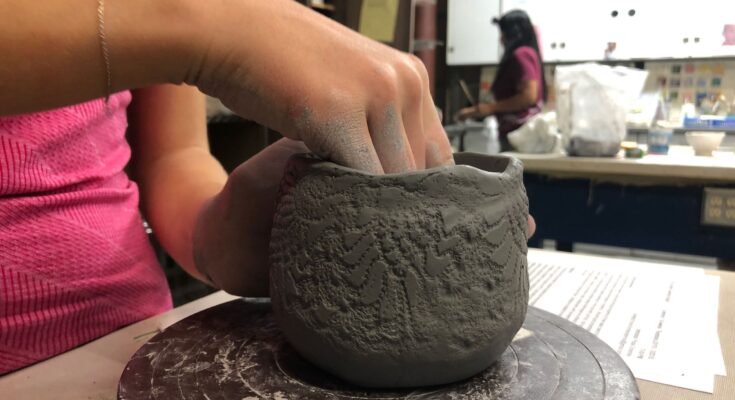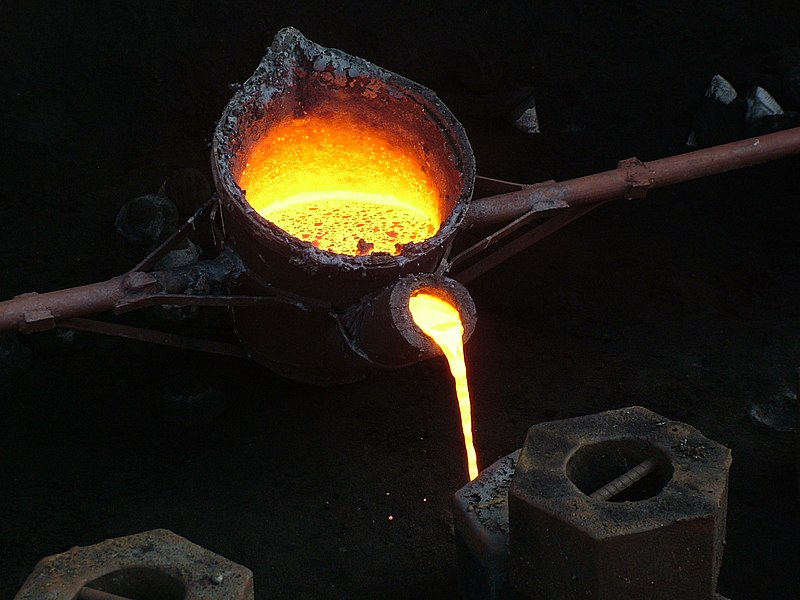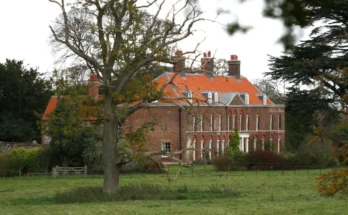Shaping Moulds Using Local Materials
For the Malhore or Malhar tribals of Pundi village in Jharkhand their lives consist of living off their own environment with all the material they can acquire from local sources. Their lives are so simple and undemanding that the raw material and modes of production for their crafts in a truly ancient skill functions at the simplest of levels. The main ingredients of the process involve acquiring metal sheets or pieces, clay and chaff for the mould, wood for the furnace to heat the wax. Local clay and chaff collected from agricultural waste is mixed and shaped to form a mould in the form of the intended object.
The mud mould is further dried under the open sun until it hardens.
The mud mould needs to be fully dry before it can be covered with tar.
Preparing the Layer of Tar

The metal smiths of Pundi use tar instead wax, which is easier to acquire from roadside construction projects nearby. The clay mould is covered with heated and filtered tar. While the tar is still malleable, any decoration can be done on it.
Water is filled in the container, in which the molten tar is slowly poured. The tar acts like a wax when cooled.
Molten tar heated till boiling point is used like wax to model the desired design of the dhokra item.
The tar is slowly poured into a container with water. The molten tar is not directly subjected to the water below.
It is passed through a cotton cloth, which helps in keeping the tar away from any impurities like sand particles or stones.
The mud mould is further wrapped up in tar threads.
The tar which acts like a wax in thread form, is twisted in the desired shape and design.
Small designs are first made in tar and later are glued onto the mould.

A layer of tar comes on top of the mud mould on which an intricate design is etched by hand using a small metal piece which is like a blade.
Small intricate designs, which are mostly inspired from nature around the artists are designs are first made in tar and later glued onto the mould.
Once the mud moulds is wrapped up in tar threads, smaller designs or motifs made from tar are glued onto the layer.
This is point when intricate motifs that are made are mostly birds, small insects, animals etc.
Layers of tar threads are creatively used to decorate the outer portion of this container
Once the mould is covered and decorated with tar, another layer of clay is used to cover it. This outer clay mould takes the shape and formations of the tarred piece and becomes the receptacle to receive the moulten metal.
A mixture of mud and rice chaff is prepared by artisans to cover the tar layer.
After the layer of tar is done, it is then covered with the final layer of prepared mixture of mud and rice chaff.
This layer ensures that the tar is sandwiched between two layers of mud.
This layer ensures that no leakage occurs when the molten metal is poured inside the mould.
The artisans buy their mixture of metal substances using damaged metal vessels and scrap metal from vendors in the city. Lost wax processes use an alloy of metals like zinc, lead, brass, tin and aluminum.
Artisans often hammer down old metal containers into pieces, to be used in the casting process.
The broken pieces of scrap metal have to be weighed on simple hand held weighing scales, depending on the size of each dhokra item, before they undergo the firing process.
Ducts allow the tar to melt, drain away and be replaced by the molten metal when heated over a strong fire. Once the inner metal hardens, the outer layer of clay is chipped off, leaving the metal object ready for rubbing and polishing till it shines like old gold or dull silver, depending on the alloy.
The firing pit is an immensely hot place to work, particularly in the additional heat of summer where temperatures rise above 45 degrees centigrade.
The molten metal can be seen inside the mould during the casting process.
After the first firing, the tar inside the mould melts, and flows out.
It is collected in a container for further use.
Soon after the firing process is done, the mould are carefully taken out from the fire and are placed inside a container filled with water, as the mould is really hot.
The outer layer of the mould which is mud is broken and the final metal piece is taken out.
Once the clay is broken, the dhokra items are ready to be polished.
Apart from containers, dhokra figures are made after moulding the clay into assorted animal, bird or human shapes according to the creativity of the artisan.
Tar is shaped into desired designs before it is covered with clay.
A small tar figure of a quaintly elongated Lord Ganesha emerges, once shaped.
The last step of dhokra production process is the finishing process. The metal casted items are subjected to a manual grinding process which ensures that there is no trace of mud or tar left. This is done manually by the artisans.




